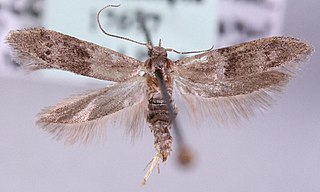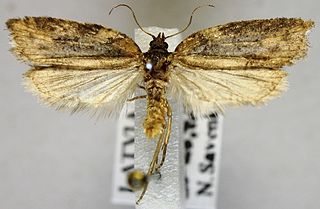
Lepidoptera is an order of insects that includes butterflies and moths. About 180,000 species of the Lepidoptera are described, in 126 families and 46 superfamilies, 10 percent of the total described species of living organisms. It is one of the most widespread and widely recognizable insect orders in the world. The Lepidoptera show many variations of the basic body structure that have evolved to gain advantages in lifestyle and distribution. Recent estimates suggest the order may have more species than earlier thought, and is among the four most speciose orders, along with the Hymenoptera, Diptera, and Coleoptera.

The de Havilland DH.82 Tiger Moth is a 1930s British biplane designed by Geoffrey de Havilland and built by the de Havilland Aircraft Company. It was operated by the Royal Air Force (RAF) and other operators as a primary trainer aircraft. In addition to the type's principal use for ab initio training, the Second World War had RAF Tiger Moths operating in other capacities, including maritime surveillance and defensive anti-invasion preparations; some aircraft were even outfitted to function as armed light bombers.

Saturniidae, commonly known as saturniids, is a family of Lepidoptera with an estimated 2,300 described species. The family contains some of the largest species of moths in the world. Notable members include the emperor moths, royal moths, and giant silk moths.

Saturnia pyri, the giant peacock moth, great peacock moth, giant emperor moth or Viennese emperor, is a Saturniid moth which is native to Europe. The species was first described by Michael Denis and Ignaz Schiffermüller in 1775. It is the largest European moth, with a wingspan reaching 15–20 cm (6–8 in).

Gracillariidae is an important family of insects in the order Lepidoptera and the principal family of leaf miners that includes several economic, horticultural or recently invasive pest species such as the horse-chestnut leaf miner, Cameraria ohridella.

Lantanophaga pusillidactyla, the lantana plume moth, is a moth of the family Pterophoridae. It is native to the southern United States, Mexico, the Caribbean, and South America. It was introduced to Australia accidentally in 1936 and is now found from Sydney to Cairns along the coast. It has also been introduced to Hawaii in 1902, Pohnpei in 1948, and Palau in 1960 for biological control. It has since been recorded from Yap in 1987–1988 and is now distributed on all islands of the Mariana and Caroline Islands where the host plant is found, except Aguijan.

Elegia fallax is a moth of the family Pyralidae. It is known from Spain, Portugal, France, Italy, Croatia, the Czech Republic, Slovenia, Hungary, Romania, Bulgaria, North Macedonia and Greece. It has also been recorded from the Channel Islands in 2005.

Hodebertia is a genus of micro-moth of the family Crambidae. It contains only one species, Hodebertia testalis, and is found in the tropics, but ranges north to parts of Europe on occasion.

Blastobasis glandulella is a species of moth of the family Blastobasidae. It is found in the eastern United States and southern Ontario, Canada. It has also been recorded in California. In Europe, it has been recorded from Austria, Germany, the Czech Republic, Italy, Slovakia and Croatia.

Hypatopa segnella is a moth in the family Blastobasidae. It is found in Norway, Finland, Germany, Poland, Austria, Slovakia, the Czech Republic, Bosnia and Herzegovina, Ukraine and Russia. It has also been recorded from Switzerland. It has also been recorded from North America, but these records were later treated as misidentifications.

Aristotelia subdecurtella, the brown fen neb, is a moth of the family Gelechiidae. It is found in most of Europe, except Norway, Belgium, Spain, Switzerland, the Czech Republic and most of the Balkan Peninsula. It is also found in the Russian Far East. The habitat consists of wetland areas.

Chionodes viduella is a moth of the family Gelechiidae. It is found in France, Germany, Austria, Switzerland, Italy, the Czech Republic, Slovenia, Poland, Bulgaria, Norway, Sweden, Finland, the Baltic region and Russia. It is also found in northern North America, from Alaska to Maine.
Syncopacma polychromella is a moth of the family Gelechiidae, it was described by Hans Rebel in 1902.
Micralarctia punctulatum is a moth of the family Erebidae. It was described by Hans Daniel Johan Wallengren in 1860. It is found in Angola, Botswana, Cameroon, the Democratic Republic of the Congo, Eritrea, Ethiopia, Ghana, Kenya, Malawi, Mozambique, Namibia, Niger, Nigeria, Senegal, South Africa, Tanzania, Gambia, Uganda, Zambia and Zimbabwe.
Podomachla apicalis is a moth of the family Erebidae. It is found in Angola, Cameroon, the Republic of Congo, the Democratic Republic of Congo, Equatorial Guinea, Eritrea, Ethiopia, Gabon, Ghana, Kenya, Liberia, Malawi, Mozambique, Nigeria, Sierra Leone, South Africa, São Tomé & Principe, Tanzania, Togo and Uganda.

Periclepsis cinctana, the Dover twist, is a species of moth of the family Tortricidae found in Europe. It was first described by Michael Denis and Ignaz Schiffermüller in 1775.
Carectocultus perstrialis, the reed-boring crambid moth, is a moth in the family Crambidae. It was described by Jacob Hübner in 1831. It is found in North America, where it has been recorded from Florida, Georgia, Maryland, Massachusetts, Mississippi, Nova Scotia, Ohio, South Carolina and Texas. Outside of the United States, it has also been recorded from the West Indies and South America.

Acleris scabrana, the gray rough-wing moth, is a species of moth of the family Tortricidae. It is found in Europe, where it has been recorded from France, Belgium, the Netherlands, Germany, Austria, Switzerland, the Czech Republic, Slovakia, Poland, Hungary, Romania, Finland, Latvia, Lithuania, Ukraine and Russia. It is also found in Kazakhstan, Tian Shan, Yakutia, Asia Minor and North America, where it has been recorded from Alberta and British Columbia to California.
Cnaphalocrocis cochrusalis, the marasmia moth, is a moth in the family Crambidae. It is found in the West Indies, Costa Rica, Honduras and the United States, where it has been recorded from Florida, Louisiana, Mississippi, Oklahoma, South Carolina and Texas.














